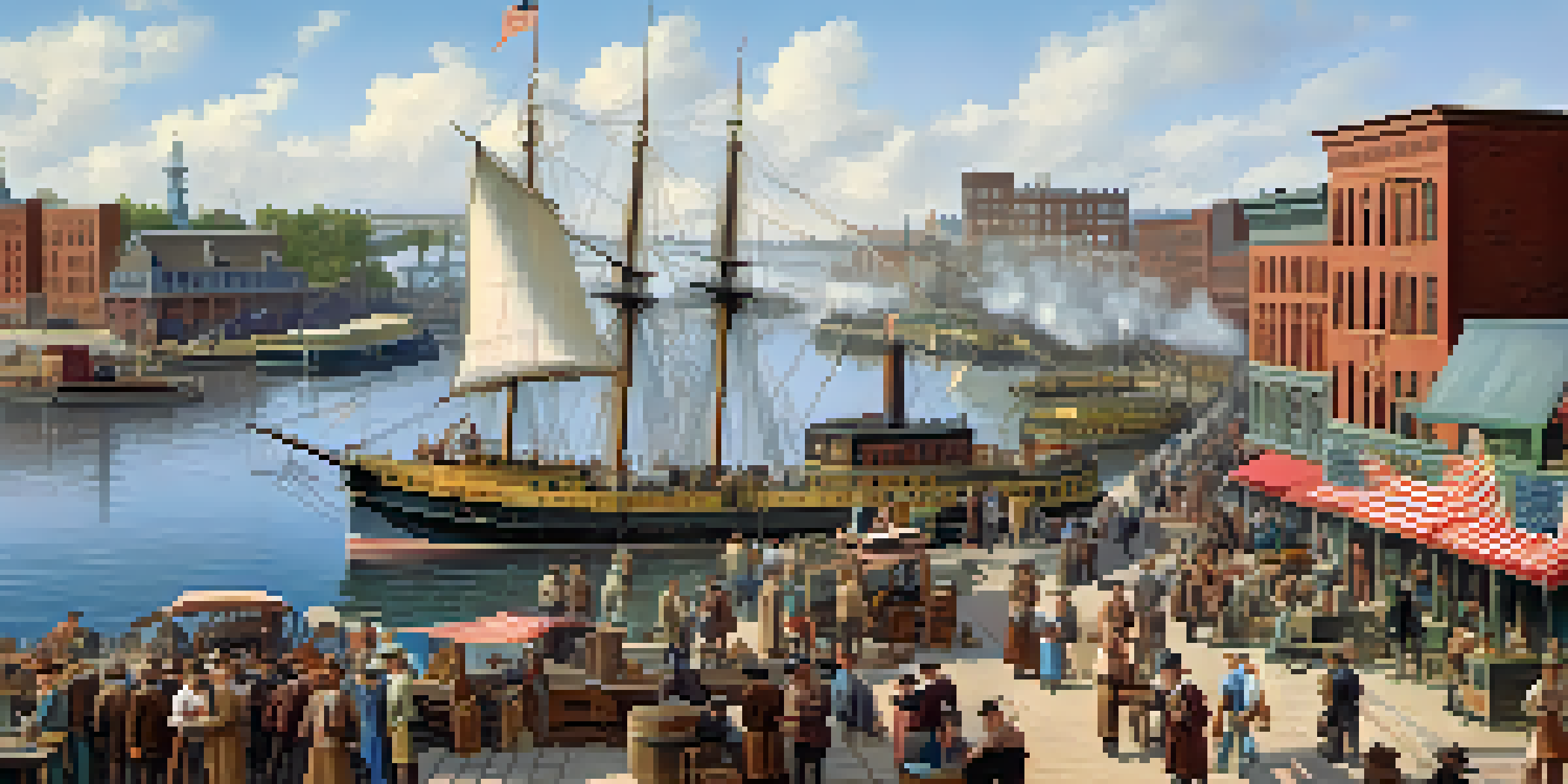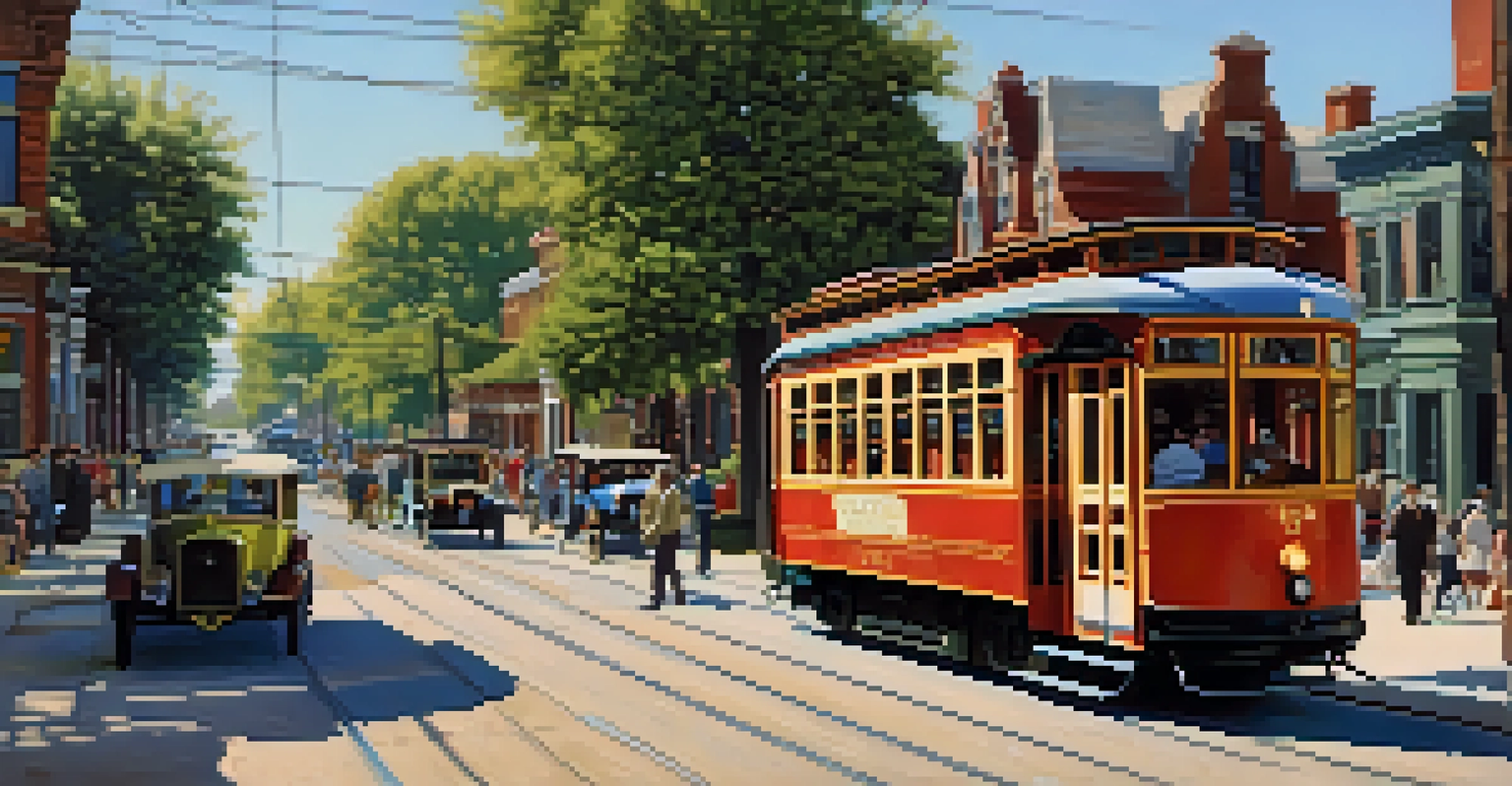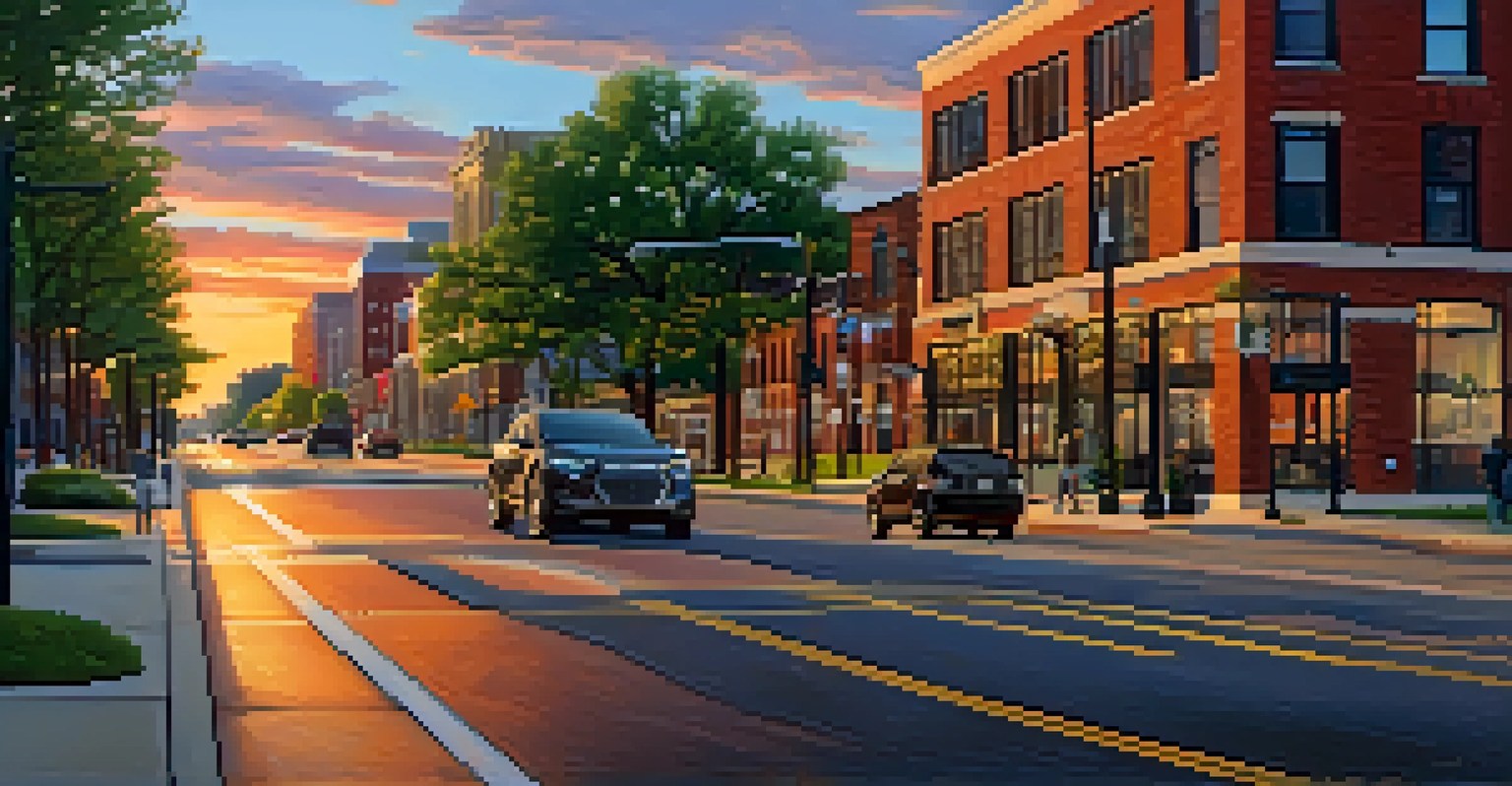St. Louis Transportation System: A Historical Perspective

The Birth of St. Louis Transportation in the 19th Century
St. Louis's transportation system began to take shape in the early 1800s, primarily driven by the Mississippi River. As a bustling river port, it became a hub for steamboats, facilitating trade and travel. This waterway was not just a means of transportation; it was the lifeblood of the city's economy, connecting it to the rest of the nation.
The best way to predict the future is to create it.
With the rise of the steamboat industry, the city saw an influx of goods and people, leading to rapid growth. By mid-century, the construction of railroads began to complement river transport, creating a more comprehensive network. The convergence of these two modes marked a significant shift, allowing St. Louis to thrive as a transportation center.
The impact of these early transportation methods cannot be overstated. They laid the groundwork for future developments and established St. Louis as a critical junction for east-west and north-south travel. This era set the stage for innovations that would emerge in the decades to follow.
Railroads: The Game Changer for St. Louis
The arrival of railroads in the mid-1800s revolutionized St. Louis's transportation landscape. Railroads such as the Missouri Pacific and the Wabash Railway connected the city to distant markets, further enhancing its economic significance. Suddenly, goods could move faster and more efficiently than ever before, reshaping commerce in the region.

By the late 19th century, St. Louis had become a vital railroad hub, boasting numerous lines and terminals. This expansion facilitated not only trade but also the movement of people, contributing to a population boom. The city's strategic location made it a melting pot of cultures and ideas, spurred by the ease of transportation.
St. Louis: A Transportation Hub
St. Louis evolved into a major transportation center through the convergence of river transport and railroads in the 19th century.
However, this growth came with challenges. The rapid expansion of railroads led to congestion and safety concerns. Nonetheless, the impact of railroads was profound, establishing St. Louis as a key player in the national transportation network.
Streetcars and Urban Mobility in the 20th Century
As the 20th century dawned, streetcars emerged as a popular means of urban transport in St. Louis. These electric streetcars provided residents with an efficient way to navigate the growing city. They connected neighborhoods to downtown, making it easier for people to commute to work and access services.
Transportation is a fundamental human need, and it is essential to the production and distribution of goods and services.
The streetcar system expanded rapidly, with lines crisscrossing the city. This growth spurred urban development, as businesses flourished near streetcar stops. It also encouraged suburbanization, as families sought homes in quieter areas while remaining connected to the city's amenities.
However, the advent of automobiles in the mid-20th century began to challenge the dominance of streetcars. As more people opted for personal vehicles, streetcar ridership declined. Despite this shift, the legacy of the streetcar system remains evident in St. Louis's transportation history.
The Rise of the Automobile and Highway Development
With the post-World War II boom came a significant increase in automobile ownership in St. Louis. This shift transformed the transportation landscape, emphasizing the need for extensive road systems. The construction of highways like Interstate 70 and Interstate 64 facilitated faster travel, reshaping how residents navigated the city.
The rise of the automobile also led to changes in urban planning. Suburbs expanded, and cities began to prioritize road infrastructure over public transit. This shift had lasting implications, as traffic congestion and urban sprawl became pressing issues in St. Louis and beyond.
Challenges of Urban Mobility
The rise of automobiles and changing urban planning in the mid-20th century led to congestion and a decline in public transit options.
While the automobile provided convenience, it also presented challenges, like air pollution and increased reliance on fossil fuels. The transportation system's evolution highlighted the delicate balance between efficiency and sustainability in urban development.
Public Transit: Challenges and Innovations
As the 21st century approached, St. Louis faced challenges in maintaining an effective public transit system. The decline in streetcar usage and the struggles of the bus system highlighted the need for innovation. Many residents relied on public transit, but outdated infrastructure and limited funding hindered improvements.
In response, initiatives like the MetroLink light rail system were developed to provide reliable transit options. This system connected various parts of the city and surrounding areas, making commuting easier for many. While it offered a modern solution, challenges remained regarding coverage and accessibility.
Efforts to revitalize public transit continued, with a focus on sustainability and community engagement. As St. Louis navigates the complexities of modern transportation, the city's history serves as a reminder of the importance of adapting to meet the needs of its residents.
Biking and Walking: Embracing Alternative Transportation
In recent years, St. Louis has seen a resurgence in interest in biking and walking as viable transportation options. This shift reflects a broader trend toward sustainability and healthier lifestyles. Initiatives like bike-sharing programs and improved pedestrian pathways have made it easier for residents to choose alternatives to driving.
The city has also focused on creating a more bike-friendly infrastructure, with dedicated lanes and signage. This not only promotes cycling but also enhances the overall appeal of the urban landscape. Residents are increasingly seeking ways to reduce their carbon footprint, and biking offers a practical solution.
Sustainable Future in Transit
Recent initiatives in biking, walking, and innovative public transit solutions aim to create a more sustainable and inclusive transportation system in St. Louis.
While challenges remain, such as safety concerns and infrastructure gaps, the growing emphasis on alternative transportation indicates a shift in mindset. St. Louis is moving toward a more inclusive transportation system that accommodates various modes of travel, benefiting both the environment and community.
The Future of St. Louis Transportation: Trends and Visions
Looking ahead, St. Louis's transportation system is poised for continued evolution. Emerging technologies, such as electric vehicles and smart traffic management, promise to enhance efficiency and reduce environmental impact. As cities worldwide embrace innovation, St. Louis has the opportunity to integrate cutting-edge solutions into its transportation framework.
Community engagement will play a crucial role in shaping the future of transportation. Listening to residents' needs and preferences can guide development and ensure accessibility for all. Collaborative efforts among local government, businesses, and citizens will be vital in creating a transportation system that reflects the city's values.

Ultimately, the future of St. Louis transportation will depend on balancing progress with sustainability. By learning from its rich history and embracing new ideas, the city can pave the way for a transportation system that serves generations to come.